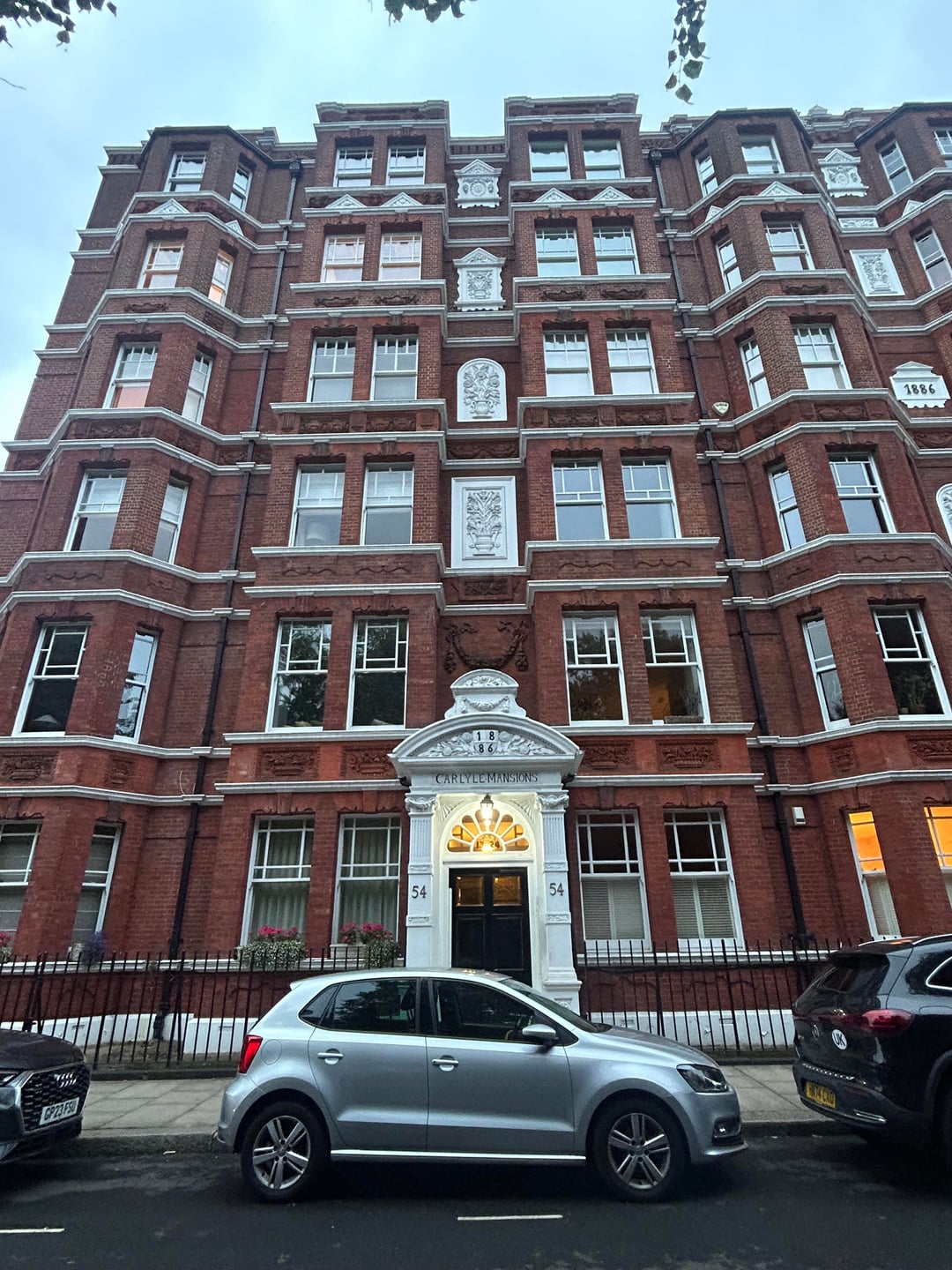
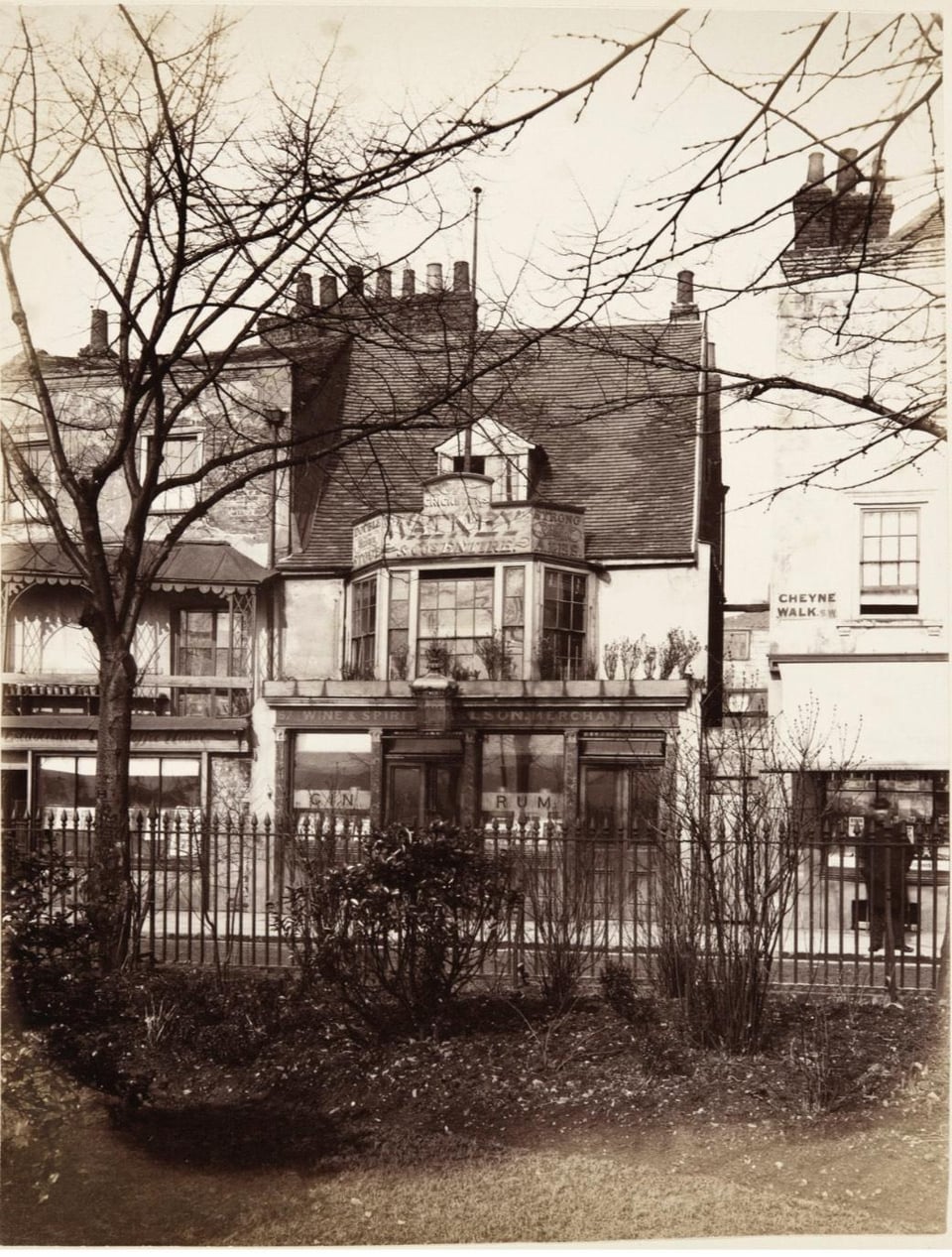
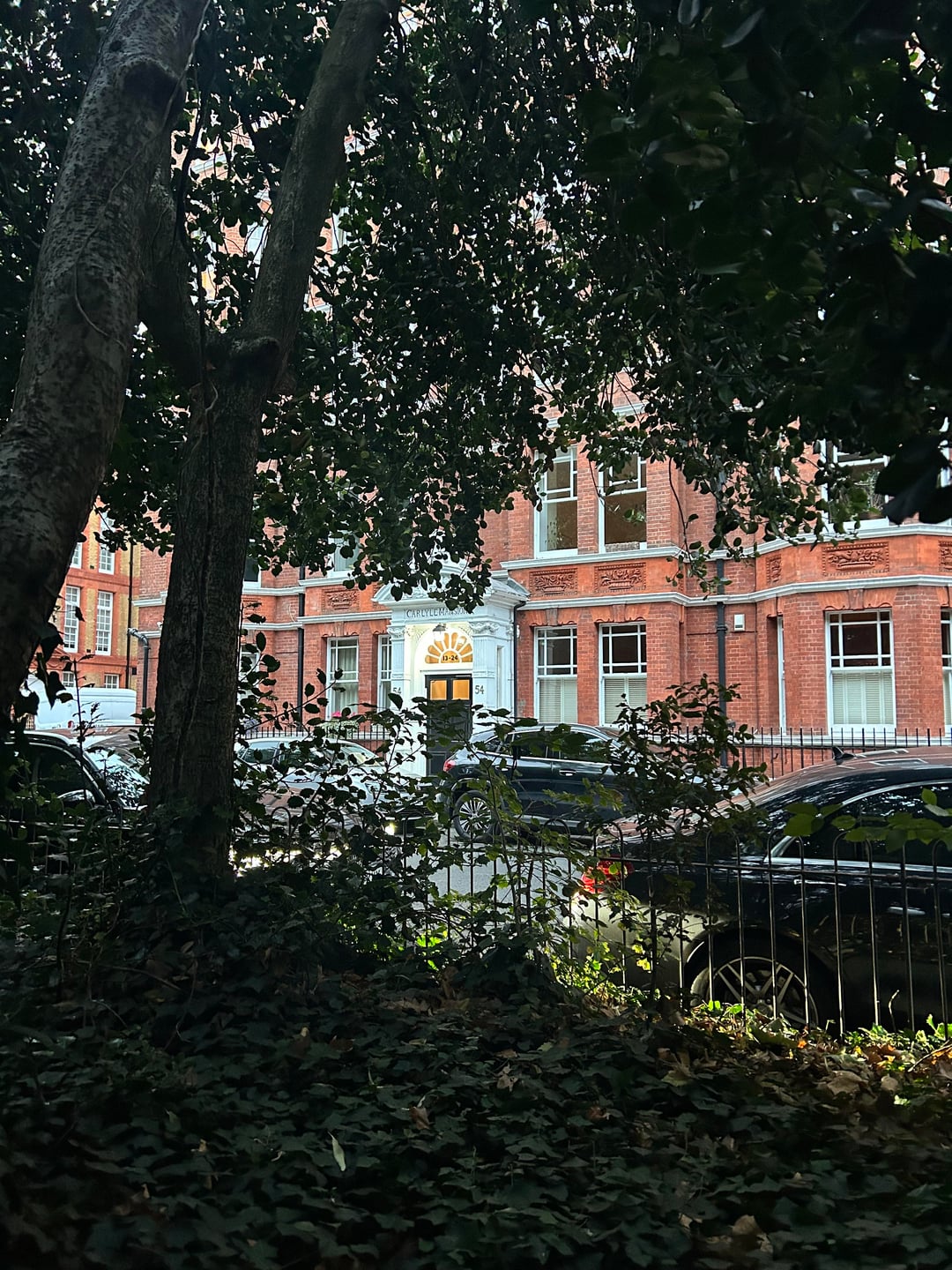
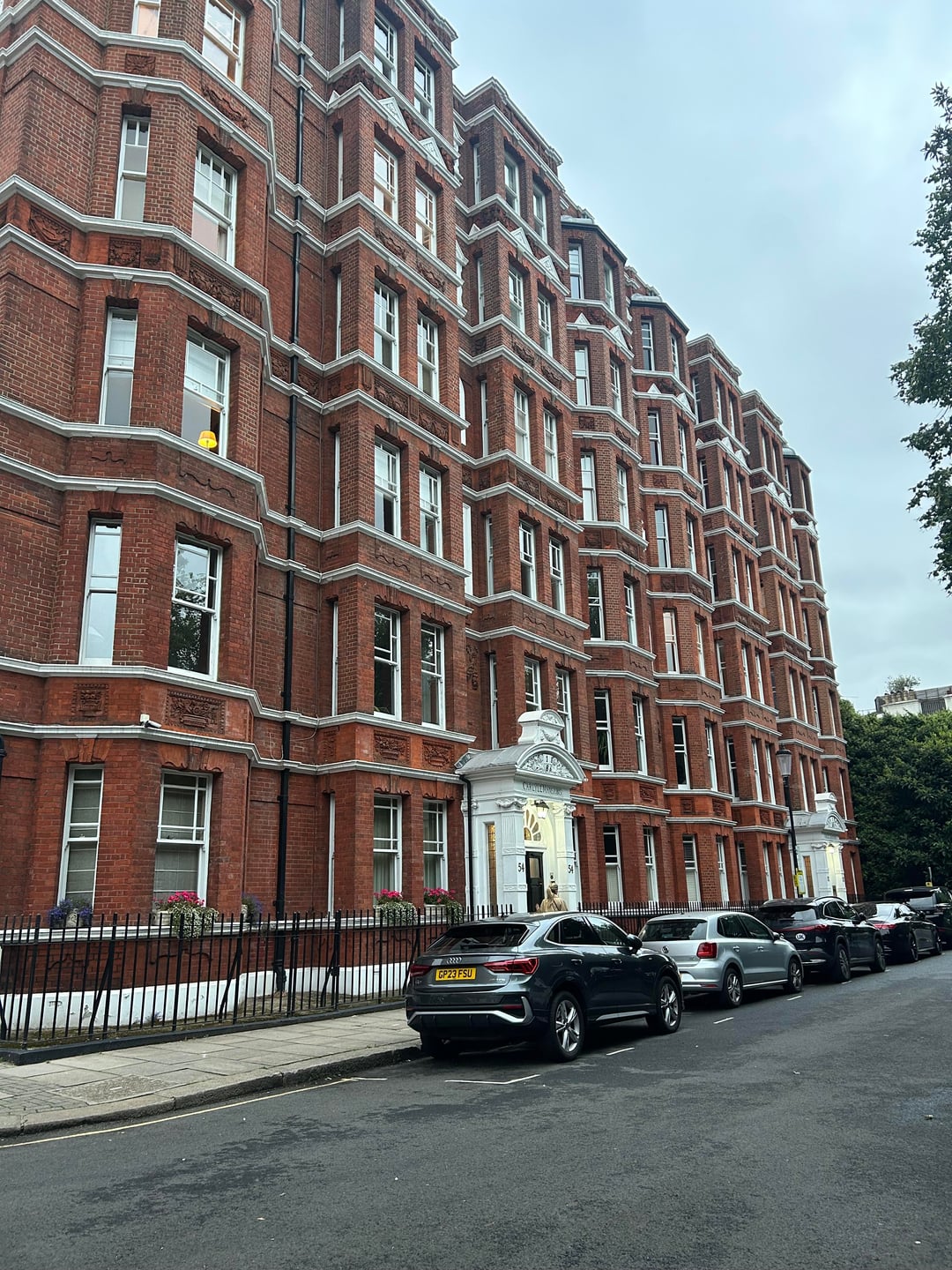
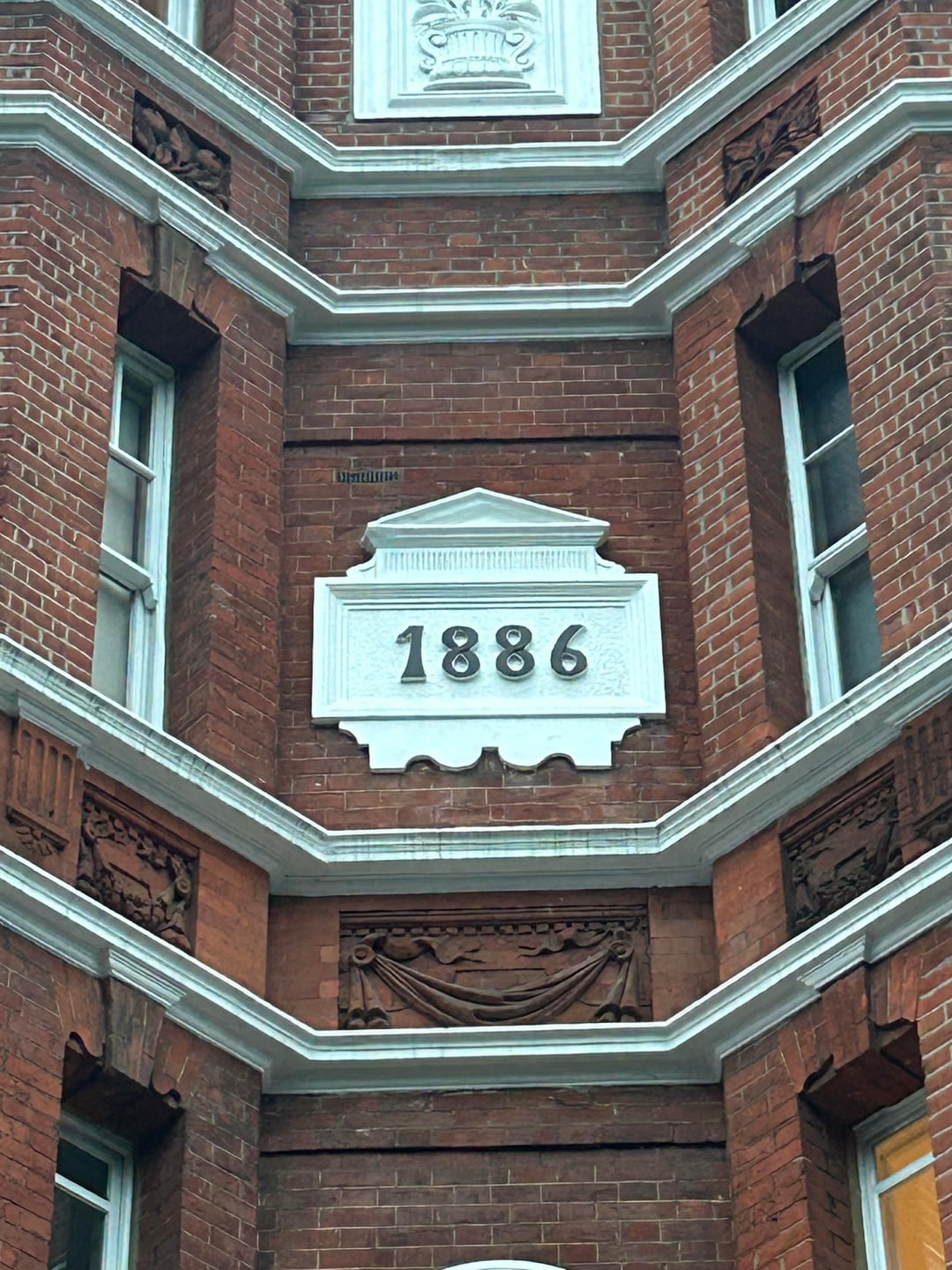
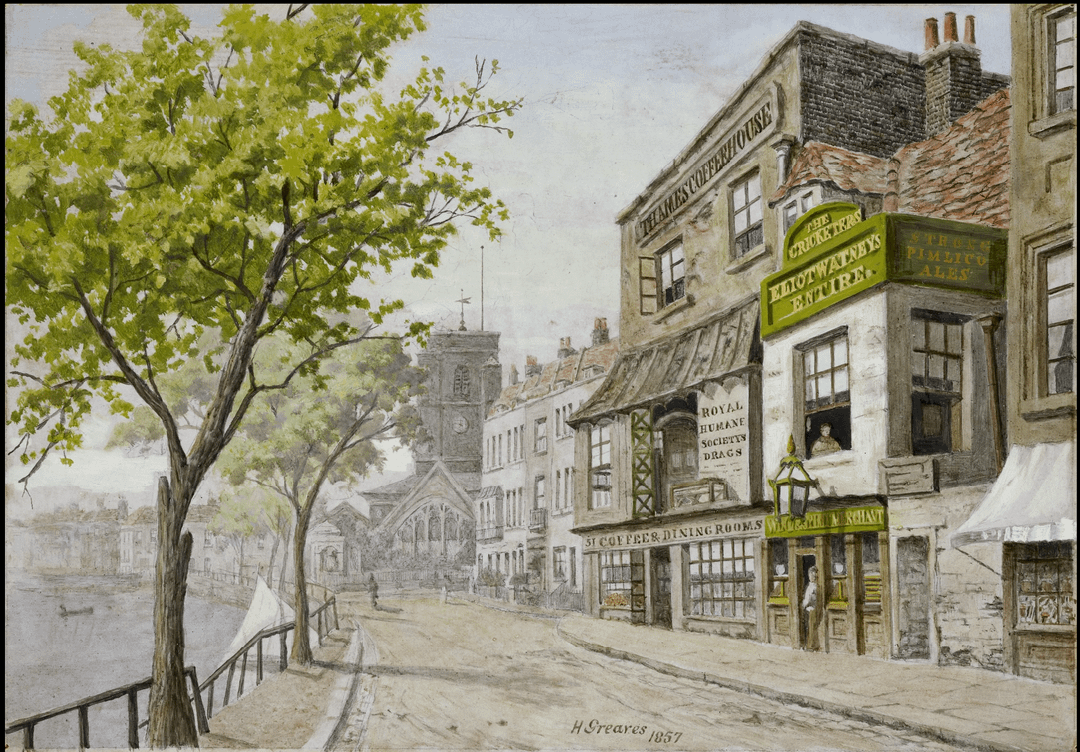
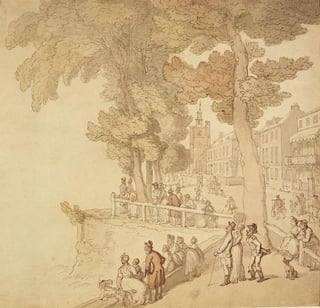
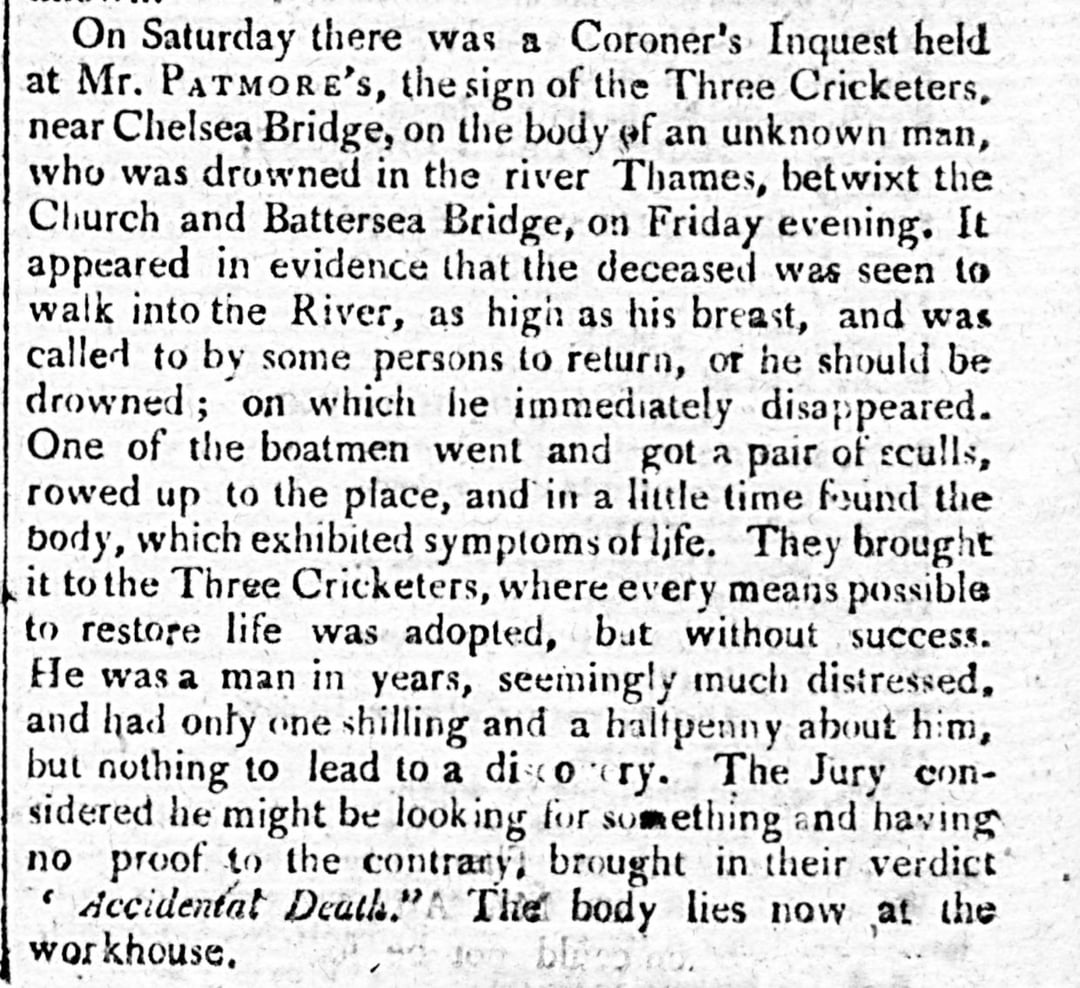
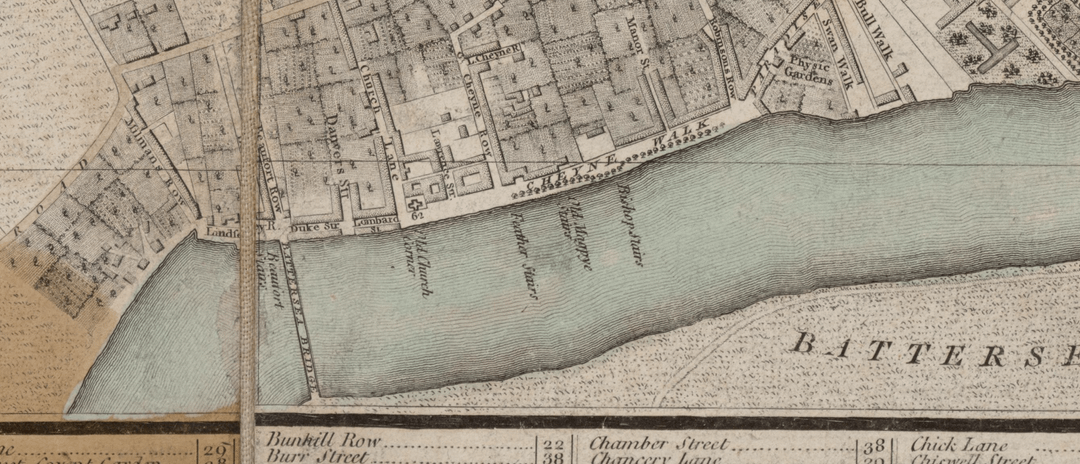
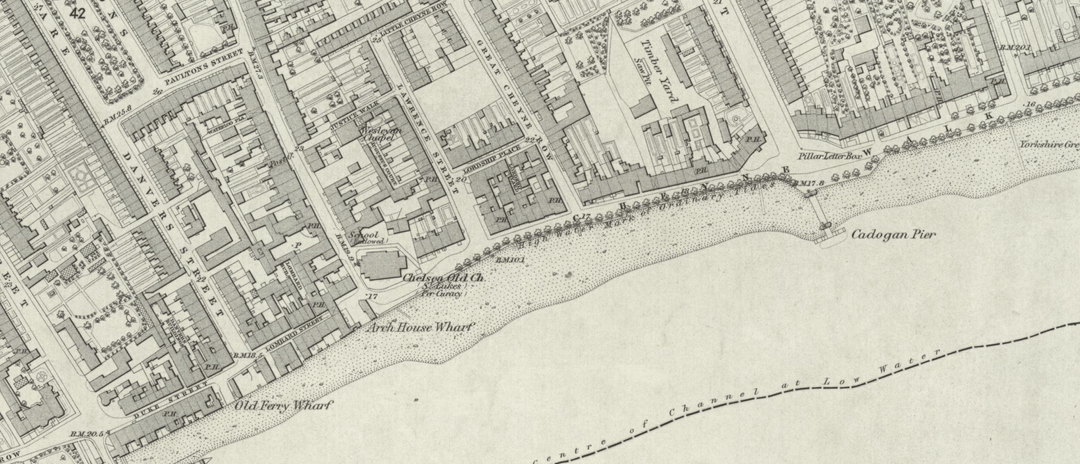
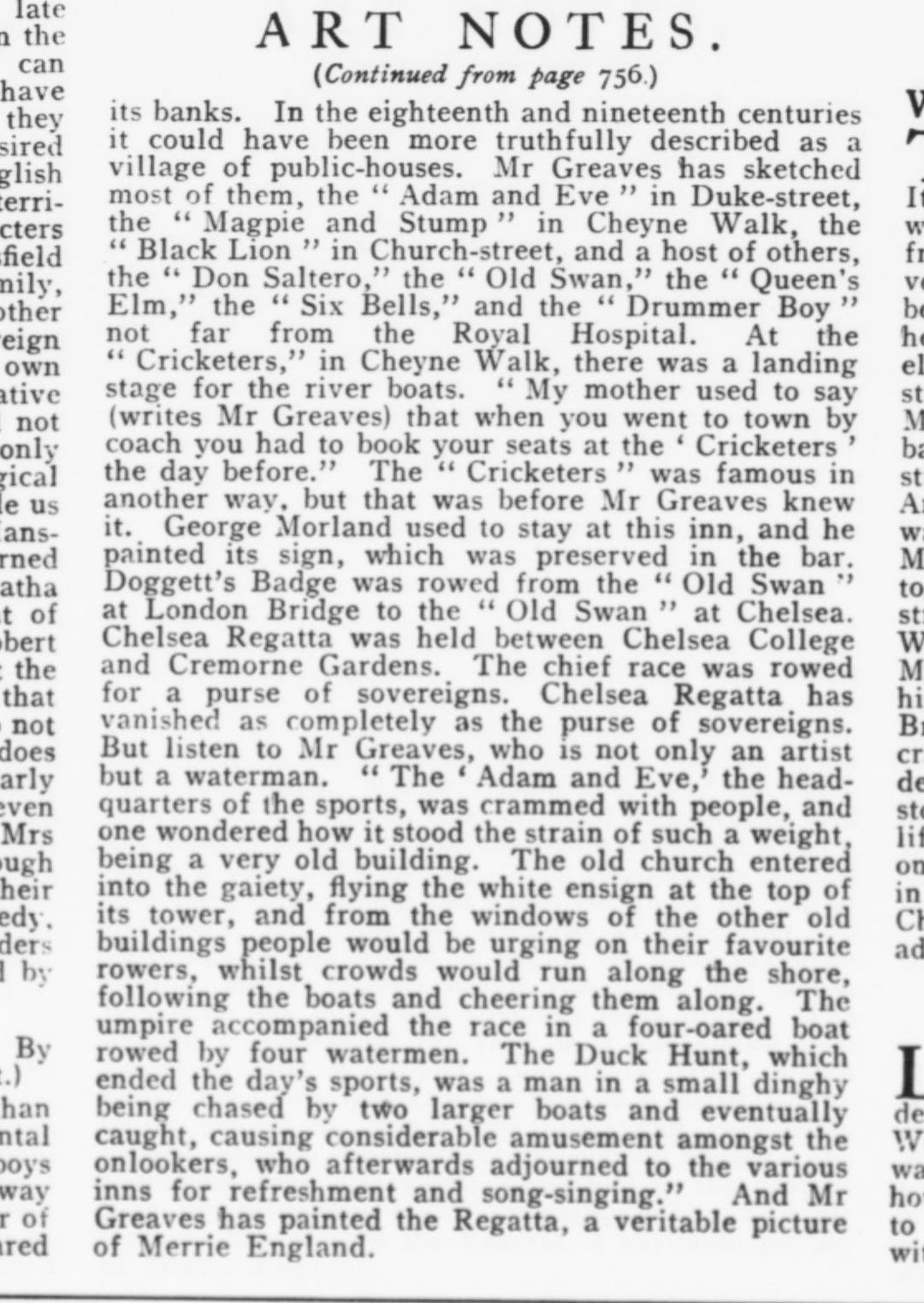
I have been digging into the past of the lost (and demolished) pub The Cricketers on Cheyne Walk. I was not going to post this, as all physical traces of the pub are gone, but I have been enjoying researching the history of Cheyne Walk and its pubs so much that I thought I might as well share it for anyone who might be at all interested or familiar with the area.
The Cricketers stood at 57 Cheyne Walk, a riverside street as part of old Chelsea. The photo of the Cricketers (image 2) was taken in the early 1880s, shortly before its demolition. It was taken by Watney, a leading brewer in London at the time who photographed many of their pubs during this period. The pub and the surrounding shops were demolished shortly after to make way for the construction of a handsome red-brick Victorian mansion block called Carlyle Mansions (images 1, 3, 4 and 5), completed in 1886. Locally it is nicknamed the Writers’ Block, as it has been home to Henry James, Erskine Childers, T. S. Eliot, Somerset Maugham, Ian Fleming, and other celebrated authors.
For much of the nineteenth century this stretch of London retained a semi-rural and bohemian air: a mix of market gardens, boatyards, and modest cottages, with grander houses and artists’ studios beginning to appear among them. Cheyne Walk was lined with handsome Georgian houses, their gardens sloping to the river, while the nearby lanes held inns, workshops, and wharves serving river traffic. The pub would have offered ale and company to watermen, labourers, and visitors strolling the fashionable riverside promenade, as well as to the writers and painters increasingly drawn to Chelsea’s quieter atmosphere on the edge of the metropolis. Paintings by H. Greaves in 1857 (image 6), which include the pub, and an earlier late-Georgian print (image 7) where the pub is just out of shot to the far right capture the area perfectly.
Although I cannot date the foundation of the pub with complete certainty, I believe it probably originated in the later part of the eighteenth century. The earliest newspaper references I have found appear in the opening years of the 1800s. An article in the Oracle and the Daily Advertiser on 19th September 1803 (image 8) reports a coroner’s inquest held at “Mr Patmore’s, the sign of the Three Cricketers, near Chelsea Bridge,” concerning a drowned man recovered from the Thames. This aligns with an entry in Holden’s Annual London and Country Directory for the Year 1805, one of a series of trade and street directories compiled by W. Holden between the late eighteenth and early nineteenth centuries, which lists the same landlord: “John Patmore, the Cricketers, Cheyne Walk, Chelsea.” It seems likely that the newspaper was not describing the pub’s formal name as The Three Cricketers, but rather referring to its sign, which probably depicted three cricketers.
If we examine maps of the area at the time, you can see the row of shops where the pub was situated in John Cary’s maps of London (image 9) dated 1790. Whilst the pub is not specifically named, you can clearly see the buildings already developed on the river side between Lawrence Street and Cheyne Row, to the east of Chelsea Old Church. Later maps, like the 1864 OS map of London (image 10), actually label all pubs with “P.H.” for Public House, and you can see The Cricketers on Cheyne Row, with The Crossed Keys to the west on Lawrence Street and the King’s Arms and Six Bells to the east.
The pub’s name almost certainly reflects the growing popularity of cricket in the late eighteenth century. By the 1770s and 1780s the game was being formalised, with the Laws of Cricket codified and the Marylebone Cricket Club established at Lord’s in 1787. Chelsea at that time was still semi-rural, its meadows and market gardens providing ample space for informal pitches where local gentlemen and tradesmen could while away summer afternoons with bat and ball. Naming an inn The Cricketers would have signalled an affinity with this fashionable pastime and offered a congenial meeting place for players and spectators alike.
As a final piece of history that helps bring this lost pub back to life in our imaginations, a 1922 reminiscence in a publication called The Queen (image 11) evokes the Cricketers as a bustling riverside inn at the heart of Chelsea’s tavern life. Set on Cheyne Walk beside a landing stage for river boats, it was the place where travellers once booked their coach seats to town the day before, and where the artist George Morland is said to have stayed, even painting the pub’s sign, which was apparently preserved for years behind the bar. Considering the article’s 1922 publication date, its author was likely drawing on first-hand memories of the house and its riverside bustle. The piece describes a waterfront alive with ferries, regattas, and cheerful disorder: watermen rowing passengers from the Old Swan at London Bridge, crowds urging on their favourite crews, and “duck hunts” staged for the amusement of onlookers. Against this backdrop the Cricketers appears not merely as a drinking place, but as a social hub where boatmen, artists, and locals gathered, its sign swinging above the Thames as part of a vivid picture of old Chelsea.
by the_englishman
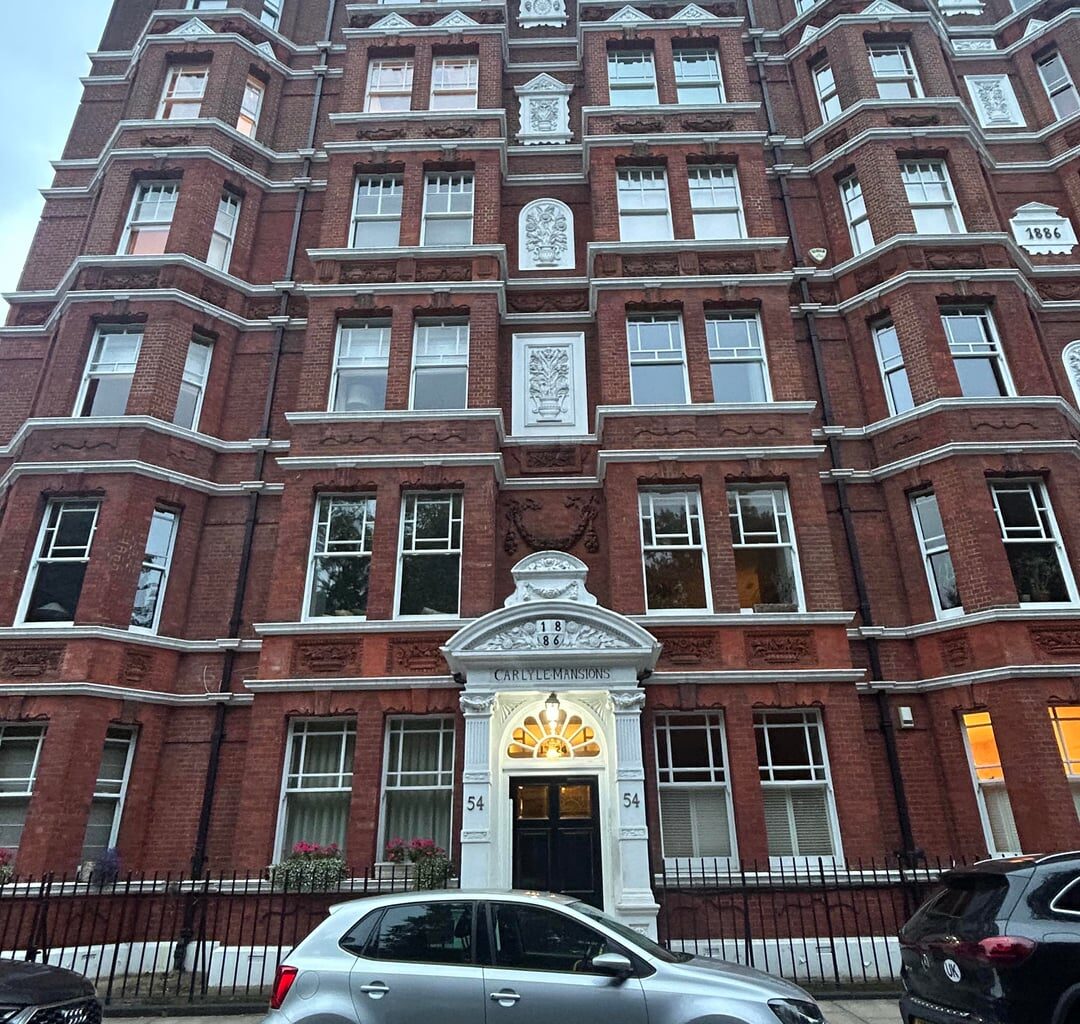
6 comments
I love these little histories, thanks!
I hope you eventually pull all these stories into a book, they’re great.
This is so cool, thanks
When I was an idealistic undergraduate student I volunteered for respite outings for elderly partners of people with severe dementia, who inevitably had to take care of their spouse even as they themselves were aging. This would all take place in Chelsea/Pimlico and would generally involve taking elderly men out for a walk round battersea park for a couple of hours to give their wife a break.
For one of these visits I was allocated to spend time with a man who lived in this building in Cheyne walk. When I arrived, I spoke to the man’s wife for a few minutes, and she asked if rather than taking her husband out of the house, she instead head to the shops while I stay with her husband who was napping and would not be likely to wait for several house.
When she left I became bored and decided to snoop around their incredible art deco/mid century modern styled flat.
One room had slide doors and was locked. I’d already seen there was a pot with keys in the kitchen and quickly found the only warded key out of the bunch. When I opened the door I was met with a square room with full length book shelves on each side. Each and every book was on Hitler, Nazism, the SS or the 2nd world war, and not in a negative fashion either. There were a few different issues of Mein Kampf there and David Irving’s ‘Hitler’s war’. There was also a pair of black leather gloves on a shelf on a metallic tray.
I relocked the room, put the key back, and went back to sit with the man again, which I did till his wife came home. I remember she said she went to have lunch in the Bibendium. I was allocated back there a couple of weeks later but felt a bit creeped out and never went back.
I had no idea those little mansions (that I walk past weekly) used to be a pub! Cool info, thanks.
Enjoying this series immensely, and drawing my friends’ attentions to it, too.
Comments are closed.